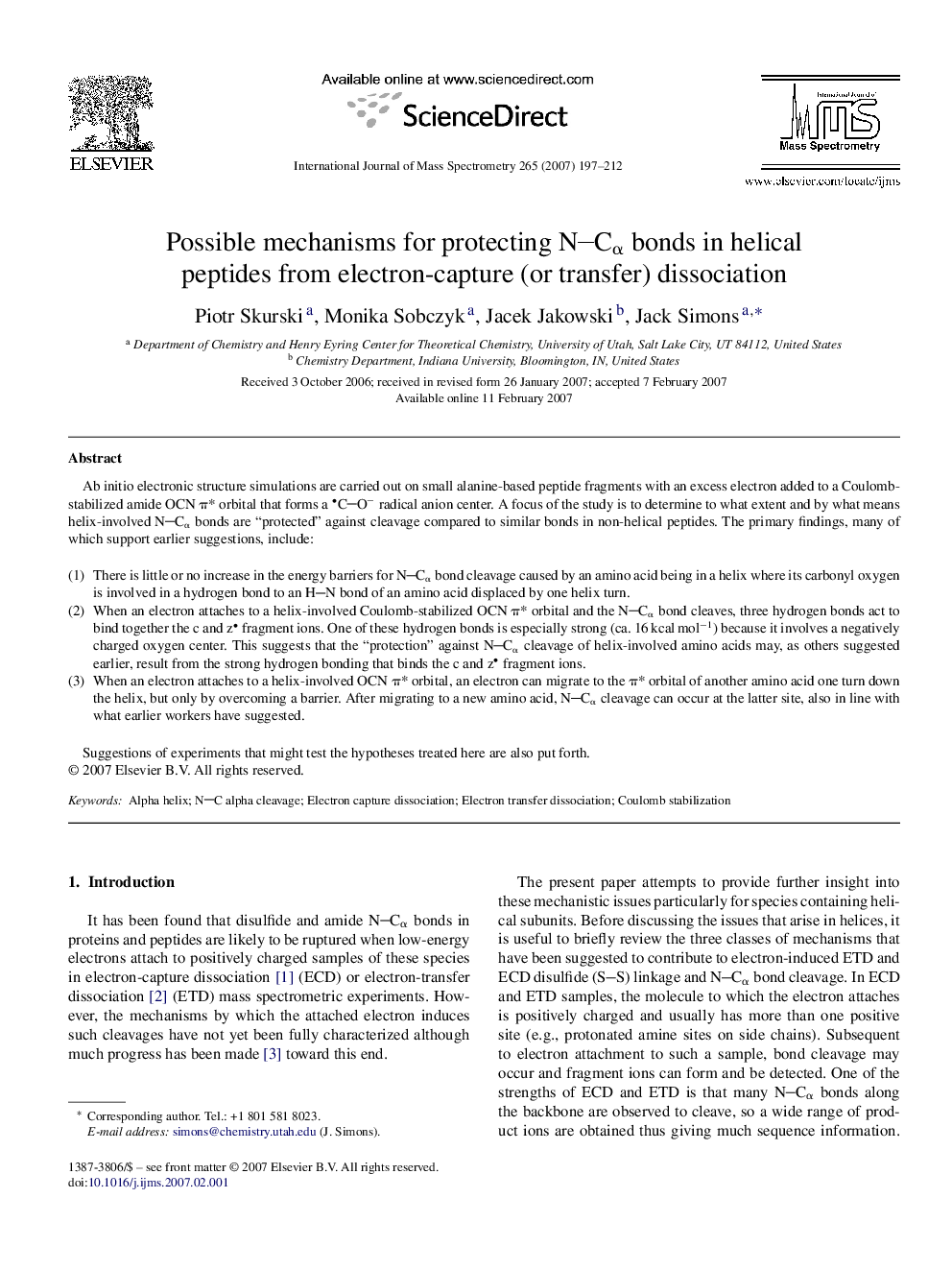| Article ID | Journal | Published Year | Pages | File Type |
|---|---|---|---|---|
| 1194113 | International Journal of Mass Spectrometry | 2007 | 16 Pages |
Ab initio electronic structure simulations are carried out on small alanine-based peptide fragments with an excess electron added to a Coulomb-stabilized amide OCN π* orbital that forms a CO− radical anion center. A focus of the study is to determine to what extent and by what means helix-involved NCα bonds are “protected” against cleavage compared to similar bonds in non-helical peptides. The primary findings, many of which support earlier suggestions, include:(1)There is little or no increase in the energy barriers for NCα bond cleavage caused by an amino acid being in a helix where its carbonyl oxygen is involved in a hydrogen bond to an HN bond of an amino acid displaced by one helix turn.(2)When an electron attaches to a helix-involved Coulomb-stabilized OCN π* orbital and the NCα bond cleaves, three hydrogen bonds act to bind together the c and z fragment ions. One of these hydrogen bonds is especially strong (ca. 16 kcal mol−1) because it involves a negatively charged oxygen center. This suggests that the “protection” against NCα cleavage of helix-involved amino acids may, as others suggested earlier, result from the strong hydrogen bonding that binds the c and z fragment ions.(3)When an electron attaches to a helix-involved OCN π* orbital, an electron can migrate to the π* orbital of another amino acid one turn down the helix, but only by overcoming a barrier. After migrating to a new amino acid, NCα cleavage can occur at the latter site, also in line with what earlier workers have suggested.Suggestions of experiments that might test the hypotheses treated here are also put forth.
